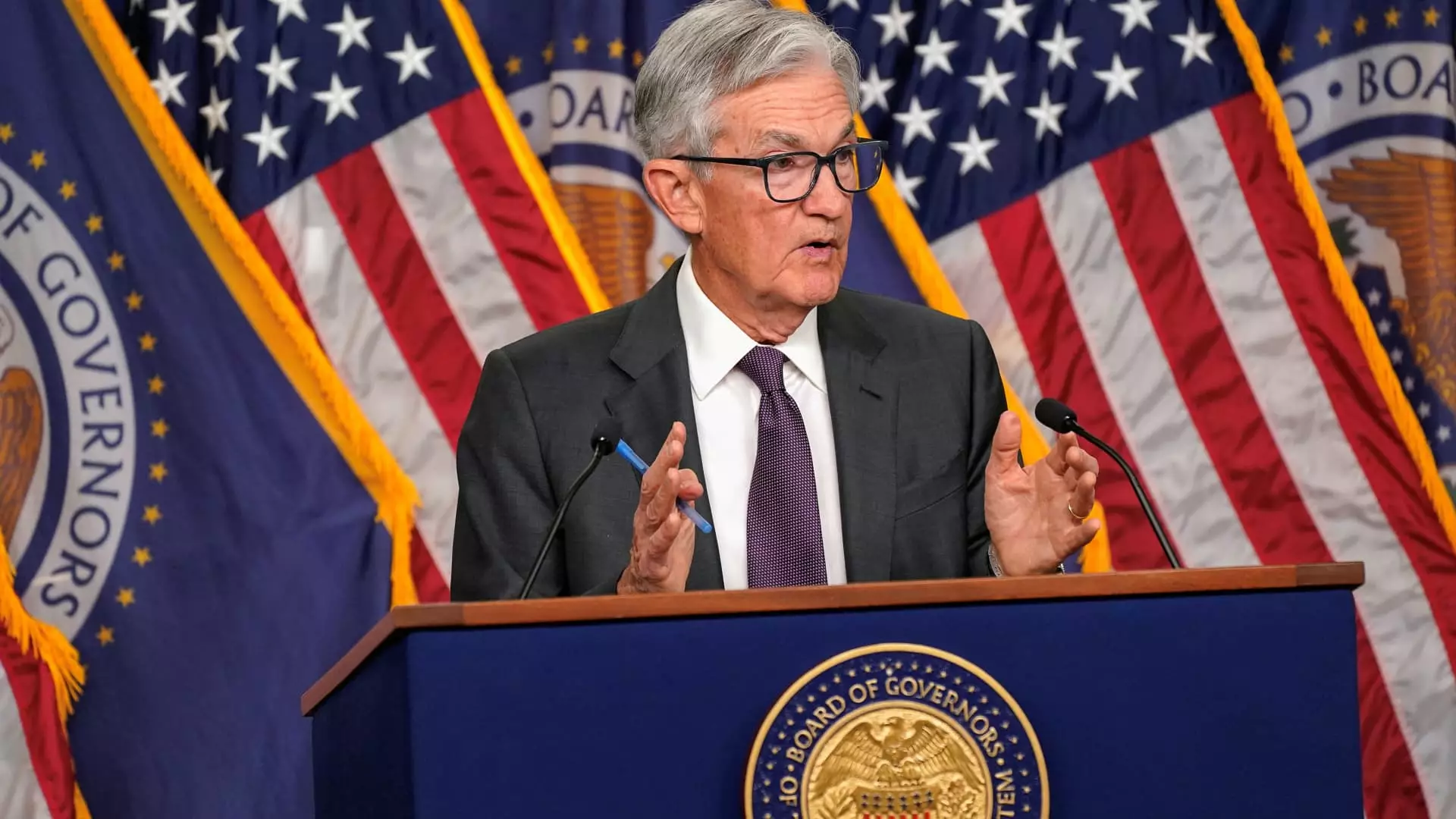In a critical decision that reflects growing economic uncertainty, the Federal Reserve has chosen to maintain interest rates within the bracket of 4.25% to 4.5%. This choice, made during their recent two-day policy meeting, signals more than just a wait-and-see approach; it reveals the underlying tension between economic vigor and the palpable anxiety stemming from existing trade policies. While financial markets were anticipating no immediate changes, the Fed’s posture remains that of caution, with hints at potential rate reductions later in the year if economic conditions necessitate such action.
The distinct lack of movement in interest rates symbolizes the Fed’s deep-seated concerns over President Trump’s trade tariffs and their ramifications on a faltering economy. Analysts have increasingly noted that while there remains room for optimism in certain sectors, the overarching data and market sentiments hint at troubling clouds on the horizon.
Expectations of Economic Growth: A Worrying Downward Trend
The Federal Open Market Committee (FOMC) has now adjusted its growth forecast for 2023 to a disappointing 1.7%, a downward revision of 0.4 percentage points from prior expectations. Such a drastic change reflects broader concerns over consumer spending—a vital pillar of economic stability that has shown signs of moderation. The Fed’s inflation forecast has likewise increased to an annual growth rate of 2.8%, signaling potential inflationary pressures that could constrict purchasing power.
These economic projections showcase a stark contradiction: while the labor market remains relatively robust, there’s an unmistakable shift toward caution regarding future growth. The idea that consumer confidence can survive amidst persistent tariff threats and inflationary pressures is increasingly debated. For consumers and investors alike, this ambiguity could lead to hesitance in spending, stunting overall economic momentum.
The Dual Mandate Dilemma: Employment versus Inflation
With the dual mandates of achieving full employment and stable prices, the Fed is caught in a precarious balancing act. In his news conference, Chair Jerome Powell noted the elevated level of ambiguity surrounding the economic outlook. This indecision mirrors the broader sentiment on Wall Street, where uncertainty reigns supreme, particularly in light of recent job market data indicating slower-than-anticipated employment growth.
The stark reality is that while the Fed committee remains committed to its dual mandate, actual macroeconomic developments suggest that maintaining price stability may further challenge their ability to foster full employment. Particularly at a moment when layoffs in certain sectors are beginning to mount, the central bank’s strategies become critically scrutinized, with many observers questioning the sustainability of an interest rate strategy that relies heavily on consumer spending.
Market Reaction: Optimism Amidst Caution
Despite the Fed’s cautious tone, investor reactions to the decision were notably buoyant, with the Dow Jones Industrial Average climbing over 400 points post-announcement. The optimism appears misplaced, given that the underlying issues remain unresolved. The current surge in stock prices, fueled by potential future rate cuts, does not necessarily reflect a healthy economy. Instead, it underscores a market more focused on monetary policy than on tangible economic improvements.
Market leaders, such as Bank of America’s CEO Brian Moynihan, try to counteract the gloom collecting over Wall Street by emphasizing continued consumer spending. Yet, juxtaposed against ominous employment figures and fluctuating inflation expectations, this optimism can appear dangerously optimistic. It raises questions about whether the ephemeral market surges can withstand the pressure of weakening consumer sentiment and declining economic growth rates.
Implications of Quantitative Tightening and Future Prospects
The Fed’s decision to slow down its quantitative tightening program is another indication of increasing caution. By reducing the roll-off of maturing Treasury bonds, the central bank is adapting to the changing economic landscape while still retaining some degree of flexibility. This cautious recalibration—a shift from strict monetary discipline to a more lenient approach—offers a plethora of implications for investors and policymakers alike.
Yet, as the Fed adapts, we must not lose sight of the larger picture. Striking a balance between controlling inflation and facilitating economic growth remains the crux of the debate. The Fed might be treading carefully to ensure the economy doesn’t swing too far in either direction. Thus, while these adjustments might yield short-term reprieve, long-term effectiveness hangs in an uncertain balance.
In such a turbulent climate, stagnation looms as a persistent threat. Overcoming this requires not just Federal Reserve vigilance and adaptability but also a concerted effort from fiscal policymakers to deploy responsible, forward-thinking measures that prioritize consumer confidence and sustainable economic growth. The stakes have never been higher as the intertwining trends of inflation and consumer behavior delineate an uncertain path ahead.

